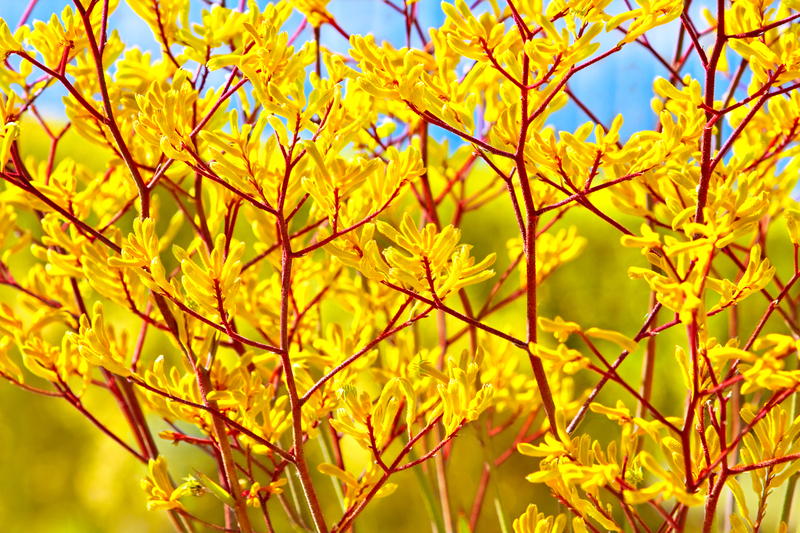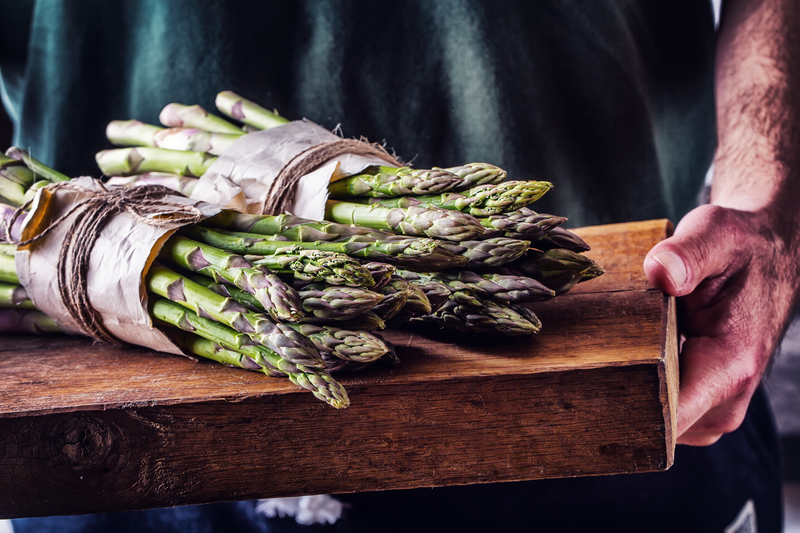Transforming Organic Waste into Fertile Soil
Posted on 16/09/2025
Transforming Organic Waste into Fertile Soil: A Complete Guide
Did you know that nearly one-third of all food produced globally ends up as waste? Organic waste, when disposed of improperly, can contribute to environmental issues like greenhouse gas emissions and groundwater pollution. However, when managed correctly, this waste turns into a valuable resource: rich, fertile soil ideal for supporting both home gardens and large-scale agricultural production. Transforming organic waste into fertile soil is not only eco-friendly, but it also plays a key role in creating sustainable food systems.

Understanding Organic Waste and Its Potential
Before diving into the methods of converting organic waste to fertile soil, let's clarify what organic waste is, as well as the benefits of recycling it back into the earth.
What is Organic Waste?
- Food scraps from kitchens (vegetable peels, fruit rinds, coffee grounds, eggshells)
- Yard clippings (fallen leaves, grass clippings, tree trimmings)
- Other biodegradable materials (paper towels, unbleached cardboard, natural fibers)
When these materials decompose in nature, they break down into basic nutrients, enriching the soil. But in landfills, their breakdown is hindered by a lack of oxygen, leading to the release of methane--a greenhouse gas far more potent than carbon dioxide.
Why Transform Organic Waste?
- Reduces landfill waste: Landfills are rapidly reaching capacity. Composting organic waste decreases the volume headed to these sites.
- Decreases greenhouse gases: Properly composted waste is less likely to emit methane, mitigating climate change.
- Improves soil health: The finished product--humus--improves soil texture, water retention, and nutrient content for gardens and farms.
- Encourages circular economies: Instead of a 'throwaway' model, organic waste recycling closes the loop, benefiting communities and the planet.
Main Methods for Converting Organic Waste to Soil
There are several tried-and-true techniques for transforming organic waste into fertile soil. Each has its merits, and the right choice depends on your space, time, and goals.
1. Traditional Composting
Composting is the process of decomposing organic material under controlled aerobic conditions. Here's how you can do it:
- Choose a Site: Pick a well-drained spot in your yard for a compost pile or bin.
- Layering: Alternate layers of green materials (food waste, grass clippings) with brown materials (leaves, straw, shredded paper).
- Aeration: Turn the pile every few weeks to introduce oxygen, speeding up the decomposition process and reducing odor.
- Moisture: Keep the pile damp--like a wrung-out sponge--to foster microbial activity.
- Curing: When the compost turns dark and crumbly, let it sit for a few weeks to mature before using it in your garden.
This process typically takes 3-12 months and results in rich, earthy-smelling soil loaded with beneficial microbes and nutrients. Composting is a cornerstone of organic waste transformation for home gardeners, municipalities, and even large-scale agriculture.
2. Vermicomposting (Worm Composting)
If space or outdoor conditions are limited, consider vermicomposting--a method that employs red wiggler worms (Eisenia fetida) to break down food scraps rapidly. Worm bins can fit under a kitchen sink or on a balcony, making them perfect for urban dwellers.
- Prepare a bin: Use a container with good drainage, filled with moist bedding (shredded newspaper, coconut coir).
- Add worms and food: Start with a pound of worms and bury small amounts of kitchen scraps weekly.
- Harvest worm castings: Every few months, collect the dark, granular "black gold"--the digested waste that's one of the best soil-enriching materials available.
Worm composting is fast, odorless and produces compost packed with nutrients and beneficial microbes for plants.
3. Bokashi Fermentation
Originating in Japan, Bokashi is an anaerobic (oxygen-free) process using special microbes to "pickle" organic waste. This method can handle items like dairy and meat that traditional composters struggle with.
- Layer kitchen waste: Inoculate each layer with the Bokashi bran (microbial mix) and press it into an airtight bucket.
- Fermentation: After two weeks, the pre-composted material can be buried directly in the soil, rapidly transforming into humus.
- Leachate: The liquid (Bokashi tea) produced can be diluted and used as a fertilizer for non-edible plants.
Bokashi is fast, space-efficient, and virtually odorless--ideal for those seeking a creative approach to organic waste recycling.
4. Industrial-Scale Solutions
Larger operations--farms, food processing centers, municipalities--often employ advanced composting techniques such as:
- In-vessel composting: Organic materials are processed in closed containers for more precise control over temperature and moisture, accelerating decomposition.
- Windrow composting: Waste is arranged in long rows (windrows) that are turned regularly to maintain oxygen flow and uniform composting.
- Anaerobic digestion: Specialized facilities use microbes to break down organic waste in the absence of oxygen, producing both fertilizer and biogas energy.
Industrial composting can handle massive volumes of waste and provides communities with both compost and renewable energy, supporting a circular economy.
How Composting Improves Soil Fertility
The process of converting organic waste into fertile soil results in what is commonly called "black gold" for gardeners. Here's why:
- Enhanced structure: Compost improves soil aggregation, making it easier for roots to grow and air/water to circulate.
- Water retention: Soils enriched with compost retain moisture better, reducing the need for frequent watering.
- Rich in nutrients: Compost contains a balanced mix of nitrogen, phosphorus, potassium, and micronutrients essential for plant growth.
- Disease suppression: Beneficial microbes in compost help suppress soil-borne pathogens, supporting plant health naturally.
- Promotes soil biodiversity: Earthworms, fungi, and good bacteria thrive in compost-rich soils.
Before-and-After: Soil Transformation Case Studies
- Community gardens using homemade compost often double their harvests and report healthier, pest-resistant plants.
- Agricultural fieldsconverted from chemical to organic compost witness increased yields after 2-3 years, with lower costs and reduced pollution runoff.
Compost does more than just feed plants--it rebuilds soil ecosystems that support life from the ground up.
Steps to Start Transforming Organic Waste at Home
Transforming your household organic waste into fertile soil is easier than you might think. Here's a simple roadmap to begin:
Step 1: Separate Your Waste
- Keep a dedicated container for organic waste (food scraps and yard clippings).
- Avoid adding meat, dairy, oily foods, and plastics to your compost pile unless using Bokashi or a commercial composting service equipped to handle these.
Step 2: Choose the Right Method
- Outdoor space? Build a compost pile or use a bin.
- Apartment living? Opt for vermicomposting or Bokashi systems.
Step 3: Monitor and Maintain
- Stir compost regularly for aeration.
- Keep it damp but not soggy.
- Balance 'greens' (nitrogen-rich) and 'browns' (carbon-rich) for optimal decomposition.
Step 4: Use Your Homemade Fertile Soil
- Mix it into garden beds, potting soil, or around fruit trees.
- Top-dress lawns for greener grass, or donate to a local community garden.
Every peel and coffee ground you compost makes a difference--reducing waste, saving money, and building a healthier planet.
Common Challenges and Solutions in Organic Waste Recycling
While recycling organic waste into fertile soil is rewarding, you might encounter a few bumps along the way. Here's how to troubleshoot:
Odor Problems
- Cause: Too much wet (green) material, or poor aeration.
- Solution: Add dry (brown) materials--leaves, cardboard--and turn the pile more often.
Pests and Rodents
- Cause: Adding meat or not covering food scraps.
- Solution: Stick to plant-based materials and bury new scraps under compost. Use a bin with a secure lid.
Slow Decomposition
- Cause: Pile is too dry or the scraps are too large.
- Solution: Add water to moisten the pile and chop materials smaller to increase surface area.
The Environmental Impact of Transforming Organic Waste
The benefits of turning organic waste into fertile soil extend beyond your garden:
- Reduces landfill methane: Composting cuts methane emissions by up to 60% per ton of organic waste diverted.
- Replenishes topsoil: Compost restores structure and fertility to depleted soils, fighting erosion and desertification worldwide.
- Boosts local food systems: Communities become more resilient by producing their own fertilizers and supporting urban agriculture.
- Conserves water: Compost-rich soils need less irrigation--a key advantage in drought-prone regions.
Global Initiatives Supporting Organic Waste Recycling
- The Zero Waste movement: Cities from San Francisco to Milan have embraced composting, helping recycle food scraps at scale.
- UN Sustainable Development Goals: Composting supports SDG 12 (Responsible Consumption and Production) and SDG 13 (Climate Action).
- Farm-to-table initiatives: Many restaurants and farms collaborate to create closed-loop systems for food and waste.

Future Trends: Innovation in Organic Waste Transformation
Exciting new technologies are making the process of transforming organic waste into soil even more efficient:
- Smart composters: Automated bins monitor temperature and moisture, delivering faster, odor-free compost for busy households.
- Biochar integration: Adding biochar to compost further boosts carbon sequestration and soil fertility.
- Microbial research: Scientists are breeding super-decomposer microbes to handle tough waste like lignin and cellulose.
- Decentralized community composting: Shared neighborhood compost centers are making it easy for urbanites to recycle food waste.
Conclusion: From Waste to Wealth
Transforming organic waste into fertile soil is a win-win for people and the planet. By embracing composting and modern waste recycling methods, you not only cut landfill waste but also create natural fertilizers that regenerate the very soils sustaining our food supply.
Whether you're a home gardener, a farmer, a city dweller, or part of a local government, every peel and leaf diverted from the landfill adds up. Start small, experiment with different methods, and join the movement turning "garbage" into green, life-giving earth.
Ready to make your world a little greener? Start today--your soil will thank you!

